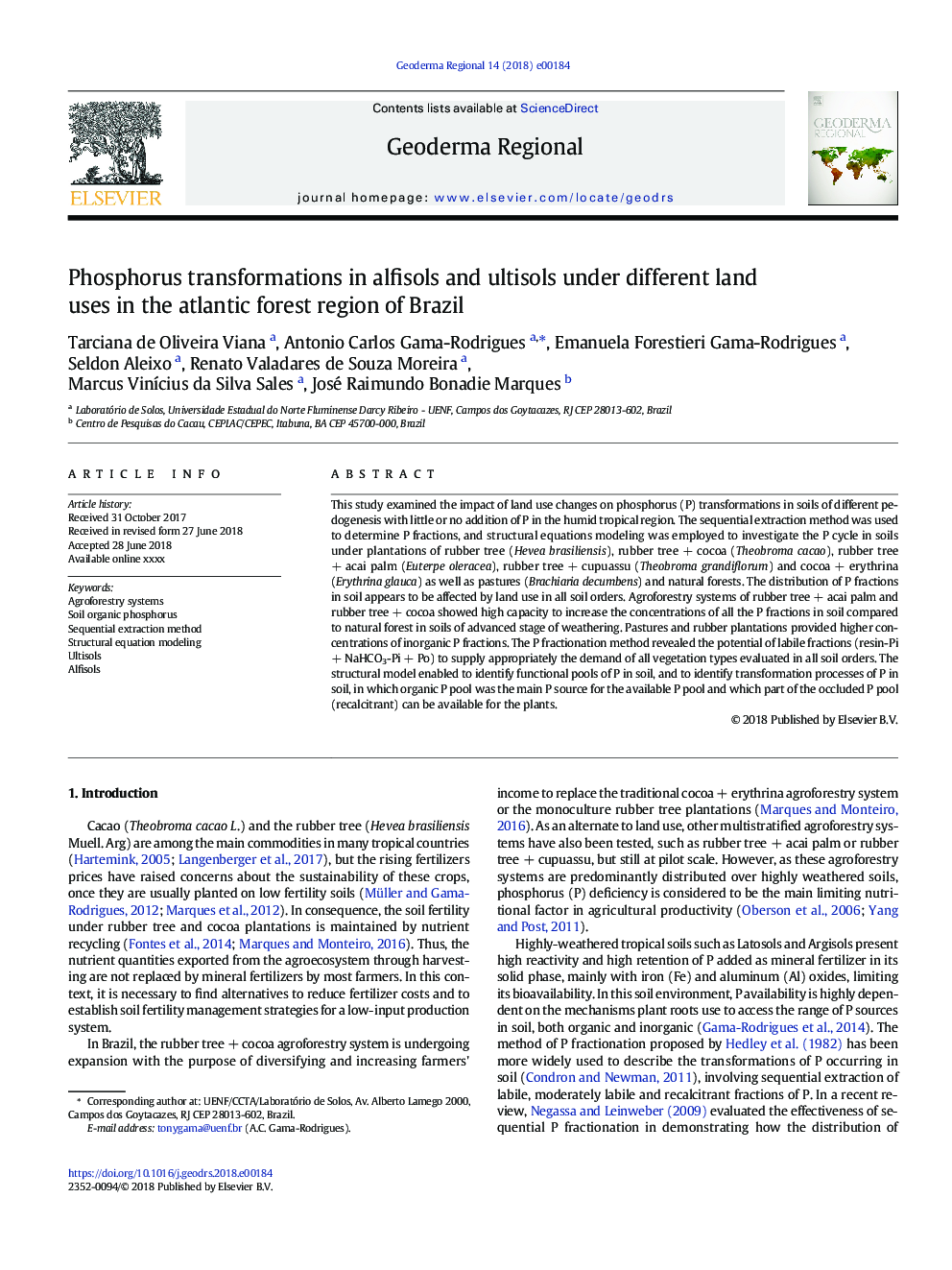| Article ID | Journal | Published Year | Pages | File Type |
|---|---|---|---|---|
| 8873212 | Geoderma Regional | 2018 | 8 Pages |
Abstract
This study examined the impact of land use changes on phosphorus (P) transformations in soils of different pedogenesis with little or no addition of P in the humid tropical region. The sequential extraction method was used to determine P fractions, and structural equations modeling was employed to investigate the P cycle in soils under plantations of rubber tree (Hevea brasiliensis), rubber treeâ¯+â¯cocoa (Theobroma cacao), rubber treeâ¯+â¯acai palm (Euterpe oleracea), rubber treeâ¯+â¯cupuassu (Theobroma grandiflorum) and cocoaâ¯+â¯erythrina (Erythrina glauca) as well as pastures (Brachiaria decumbens) and natural forests. The distribution of P fractions in soil appears to be affected by land use in all soil orders. Agroforestry systems of rubber treeâ¯+â¯acai palm and rubber treeâ¯+â¯cocoa showed high capacity to increase the concentrations of all the P fractions in soil compared to natural forest in soils of advanced stage of weathering. Pastures and rubber plantations provided higher concentrations of inorganic P fractions. The P fractionation method revealed the potential of labile fractions (resin-Piâ¯+â¯NaHCO3-Piâ¯+â¯Po) to supply appropriately the demand of all vegetation types evaluated in all soil orders. The structural model enabled to identify functional pools of P in soil, and to identify transformation processes of P in soil, in which organic P pool was the main P source for the available P pool and which part of the occluded P pool (recalcitrant) can be available for the plants.
Keywords
Related Topics
Physical Sciences and Engineering
Earth and Planetary Sciences
Earth-Surface Processes
Authors
Tarciana de Oliveira Viana, Antonio Carlos Gama-Rodrigues, Emanuela Forestieri Gama-Rodrigues, Seldon Aleixo, Renato Valadares de Souza Moreira, Marcus VinÃcius da Silva Sales, José Raimundo Bonadie Marques,
